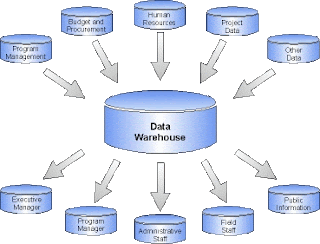The ERP system has helped the company immensely in terms of reducing and streamlining the highly manual process of third party contractors submitting repair information and invoices On average ,there are between 25000 and 4000 service orders handled by these contractors per month on a nationwide basic.
How could extended ERP components help improve business operations at shell?
The contractors had to send Shell Canada monthly summarized invoices that listed maintenance calls the contractors made at a various Shell gas online stations.Each one of these invoices would submit somewhere between 50 and 100 invoices every monthly to Shell Canada.This involved each invoice being reviewed by the appropriate territory manager and then forwarded to the head office for the payment processing.
What advise would you give Shell if it decided to choose a different ERP software solution?
A very
important facility of the ERP systems is that they increase the
availability of the information, helping companies to have information
in real time to make decisions and accurate prognostics regarding the
organization. It is important to mention that ERP systems are a very
powerful tool when it comes to processing and organizing financial data.
It improves the development of the commercial activity in the short and
long term. - See more at:
http://www.exforsys.com/tutorials/erp/erp-impact-in-organizations.html#sthash.GqrgiGBU.dpuf
A very
important facility of the ERP systems is that they increase the
availability of the information, helping companies to have information
in real time to make decisions and accurate prognostics regarding the
organization. It is important to mention that ERP systems are a very
powerful tool when it comes to processing and organizing financial data.
It improves the development of the commercial activity in the short and
long term. - See more at:
http://www.exforsys.com/tutorials/erp/erp-impact-in-organizations.html#sthash.GqrgiGBU.dpuf
A very
important facility of the ERP systems is that they increase the
availability of the information, helping companies to have information
in real time to make decisions and accurate prognostics regarding the
organization. It is important to mention that ERP systems are a very
powerful tool when it comes to processing and organizing financial data.
It improves the development of the commercial activity in the short and
long term. - See more at:
http://www.exforsys.com/tutorials/erp/erp-impact-in-organizations.html#sthash.GqrgiGBU.dpuf
I think it is a good way to choose a different ERP software solution.It improve the development of commercial activities in the short or long term, How can integrating SCM,CRM,AND ERP help to improve operations at shell?
All of this can integrated in the operations at shell is to managing information flows within the supply chain to maximize total supply chain effectiveness and profitability.With CRM shell managing all aspects of customers relationships with an organization to increase customer loyalty and retention and an organizations profitability.ERP can integrating all departments and functions throughout an organization into a single IT systems.so that managers and leaders can make enterprise wide decisions by viewing enterprise wide information on all business operations.
A very
important facility of the ERP systems is that they increase the
availability of the information, helping companies to have information
in real time to make decisions and accurate prognostics regarding the
organization. It is important to mention that ERP systems are a very
powerful tool when it comes to processing and organizing financial data.
It improves the development of the commercial activity in the short and
long term. - See more at:
http://www.exforsys.com/tutorials/erp/erp-impact-in-organizations.html#sthash.GqrgiGBU.dpuf







